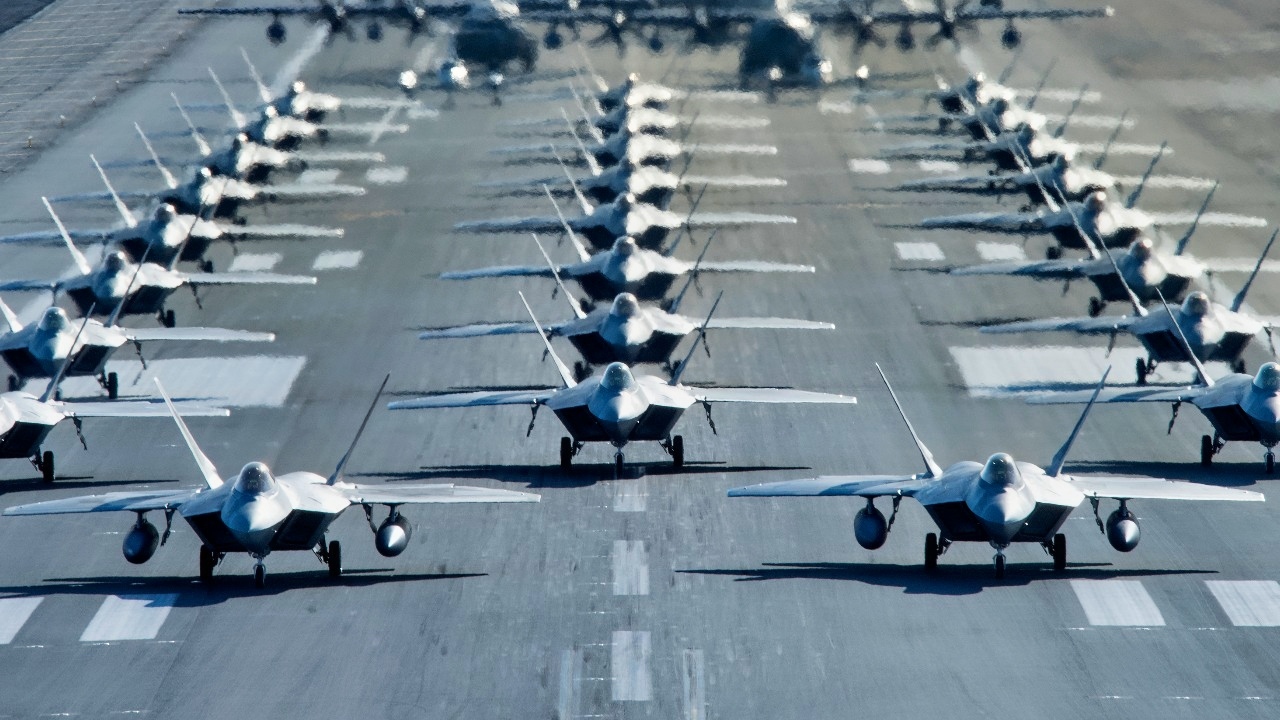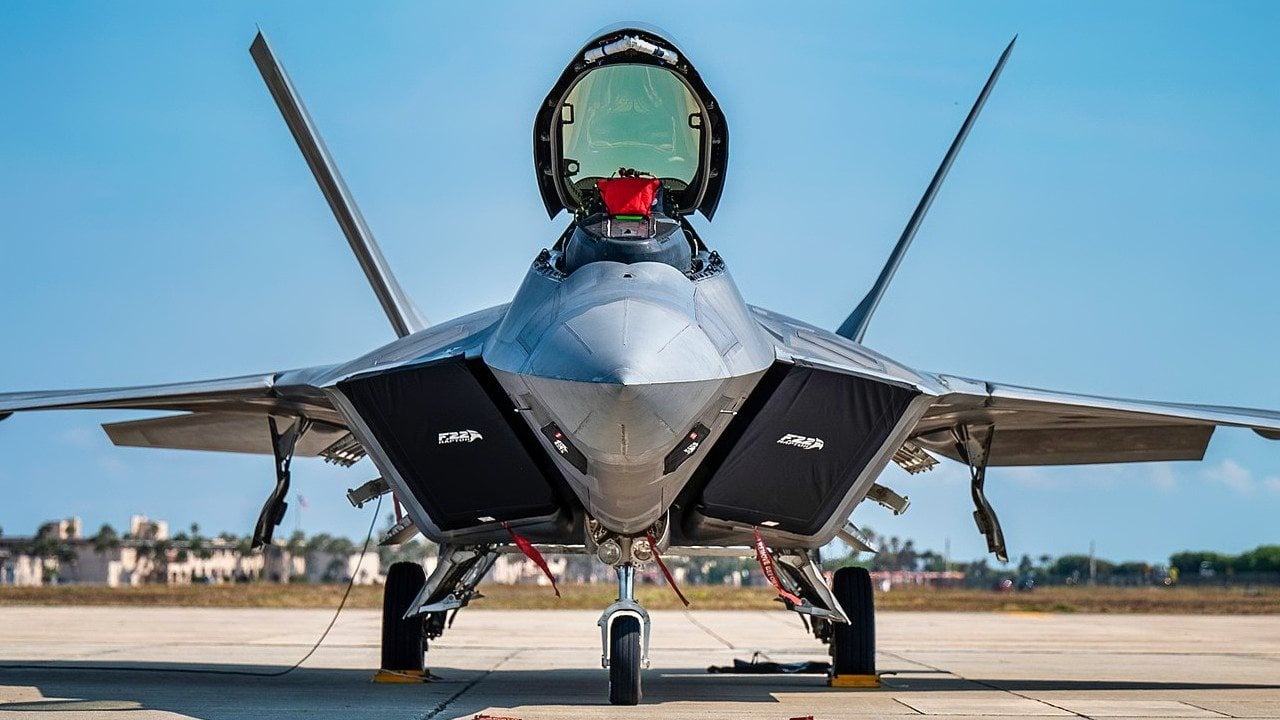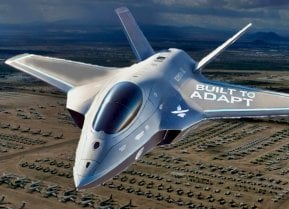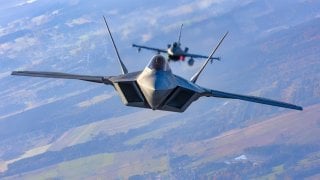Inside the Air Force's Plan to Make the F-22 Raptor Fighter Into an Aerial Assassin
As global threats rise, the U.S. Air Force is upgrading its fleet of 186 F-22 Raptors to maintain air dominance, but a more pressing issue remains: limited numbers.
Summary and Key Points: As global threats rise, the U.S. Air Force is upgrading its fleet of 186 F-22 Raptors to maintain air dominance, but a more pressing issue remains: limited numbers.

-With China mass-producing its fifth-generation J-20s, America’s reliance on a shrinking F-22 fleet could prove risky in a future conflict.
-While new sixth-generation aircraft may be cost-prohibitive, restarting the F-22 production line could be a practical solution.
-The Air Force should not only modernize existing F-22s but also expand production and consider selling the advanced warplane to close allies to bolster air capabilities and share costs.
The Air Force is Upgrading Their F-22s. It’s Time to Restart the Production Line, Too
America finds itself in the most dynamic global threat environment in the last 80 years. In many respects, it is more dangerous and unstable than it was during the Cold War nuclear standoff.
Multiple nations, all of which are vying for dominance in their part of the world, are rapidly benefiting from the diffusion of high-technology, knowledge, and skill. They believe they can upend the U.S.-led world order. Given America’s relative decline and overall weakness in the face of these threats, America’s rivals just might be correct.
The grand strategy of deterrence that has been the pillar of U.S. national security since the Cold War is dead. The fact that so many rivals are arising and do not appear fearful of America’s military capabilities or resolve indicates that deterrence is long-gone. So, now, Washington struggles to restore its lost deterrence.
What’s Really Needed
Something that the Air Force is doing is massively upgrading their fleet of F-22 Raptors. (There are currently 186 operational airframes at the Air Force’s disposal.) The Aviationist reported last month that the Air Force signed “a $1 billion contract to RTX’s Raytheon for new sensors that are categorized as ‘Group B hardware,’ together with spares and support equipment.”
The new sensors being installed on the F-22 are meant to extend its air dominance capacity.
The problem the Air Force faces with the F-22 is twofold. First, the Air Force lacks sufficient numbers of these vital birds. Second, because of the first fact, the Air Force has begun a campaign of trying to retire scores of these essential planes on the grounds that the units in question are too old and would not be used in combat anyway.
But why not?
Well, because the Obama administration, in what was clearly a short-sighted decision, opted to cancel the production line of the F-22 prematurely as a way of saving money during the Great Recession. Most experts argue that restarting that production line would be costlier than simply building the sixth-generation NGAD program.
Of course, this is a ridiculous statement, when one considers that individual units of the NGAD could cost upwards of $300 million per plane. With Congress balking at the price tag of the NGAD, and with senior Air Force leaders admitting it is impractical under current budgetary constraints, the air service appears to be reversing course on the F-22. They’re modernizing these already advanced warbirds to ensure they remain relevant.

But why not just reconstitute the F-22 production line?
No matter how advanced individual units of the F-22 are, or will be, the fact remains that the F-22s are limited in number. Should a major conflict with a near-peer rival such as China erupt soon, the Americans will undoubtedly rely upon these limited numbers of F-22s to make a difference in any air war with the People’s Liberation Army Air Force.
Irrespective, however, of whatever technological advantages F-22s enjoy over their Chinese rivals, such as China’s fifth-generation Chengdu J-20 “Mighty Dragon,” the fact remains that China has at least 200 units of these warbirds at the ready.
Given China’s manufacturing prowess, China will be able to build many more of their J-20s, whereas the F-22s, once destroyed, are gone forever.
The F-22 is America’s Greatest Warplane
The Air Force should absolutely be upgrading all 186 of their F-22s. But they should further call for the restarting of the F-22 production line. What’s more, the Pentagon should insist, and Congress should approve, the sale of the F-22 to America’s closest allies, such as Britain, Australia, Japan, South Korea, and Israel, to help offset the onerous costs of restarting the production line.
Author Experience and Expertise: Brandon J. Weichert
Brandon J. Weichert, a National Interest national security analyst, is a former Congressional staffer and geopolitical analyst who is a contributor at The Washington Times, the Asia Times, and The-Pipeline. He is the author of Winning Space: How America Remains a Superpower, Biohacked: China’s Race to Control Life, and The Shadow War: Iran’s Quest for Supremacy. His next book, A Disaster of Our Own Making: How the West Lost Ukraine, is due October 22 from Encounter Books. Weichert can be followed via Twitter @WeTheBrandon.
All images are Creative Commons or Shutterstock.
From the Vault
Russia Freaked Out: Why the U.S. Navy 'Unretired' the Iowa-Class Battleships
Battleship vs. Battlecruiser: Iowa-Class vs. Russia's Kirov-Class (Who Wins?)


